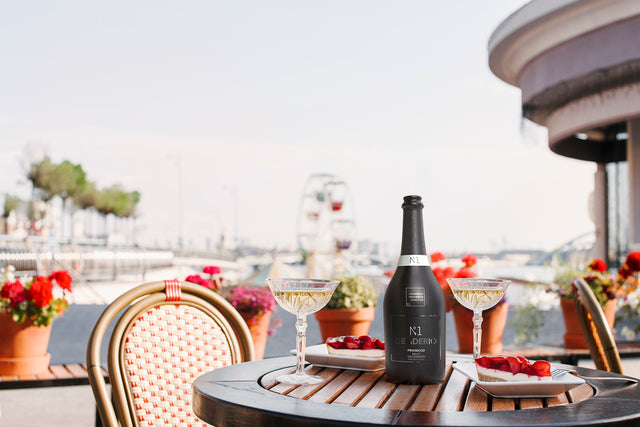The difference between Prosecco vs Champagne vs Sekt | Desiderio N°1
Ah, the classic question. You’re at a dinner party and you can’t decide what sparkling beverage to order—Prosecco or Champagne? While both are bubbly and delicious, there are some key differences between them. Let’s break it down so that you can make an informed decision next time you’re out with friends or hosting a dinner party.
Prosecco and Champagne are both delicious sparkling wines, but are made using two very different methods. Prosecco is made using the tank method, also known as Martinotti-Charmat method. This process involves fermenting the juice in a large, closed tank before bottling under pressure to induce the bubbles. Champagne on the other hand, uses the traditional method, where fermentation takes place twice — first in tanks and then in the bottle — producing complex flavors while using larger amounts of yeast and sugar for added complexity. With these two distinct production methods, each sparkling offers its own unique characteristics that make them great accompaniments to any celebration.
What Is Prosecco?
Prosecco is a sparkling wine made from the Glera grape in Italy. It has subtle floral aromas and tastes of apples, pears, and white peaches. Its flavor varies from sweet to dry. The Glera grape is usually grown up in the hills of northern Italy near Venice. The soil in this region adds to its unique flavor profile - which is why prosecco from other regions doesn't quite have the same taste!
What Is Champagne?
Champagne, on the other hand, is a sparkling wine made from Chardonnay grapes grown only in France's Champagne region near Paris. This area has a different soil composition than Italy. It also tends to be more expensive due to labor costs and limited production areas. Champagne also can range from dry to sweet depending on how much sugar has been added during production and aging processes.
What is Sekt ?
Sekt is a sparkling wine mainly produced in Germany. Here the producers are allowed to import grapes, juice or ready made wine to produce Sekt, therefore they are not allowed to use a protected designation of origin or protected denomination unlike Prosecco and Champagne.
Most Sekt are producing using the Martinotti-Charmat method, like Prosecco and a smaller percentage using the Classic Method like Champagne.
Regardless of the quality and area of production, Sekt tends to be sweeter than Prosecco and Champagne, with a strong fruity aroma and floral notes.


